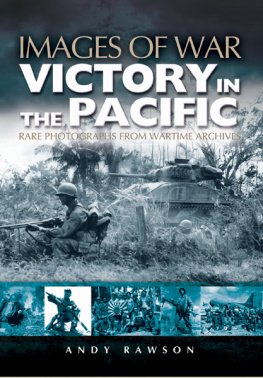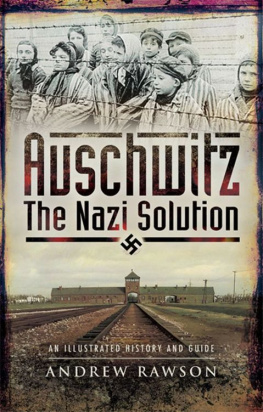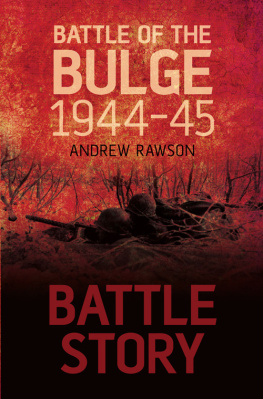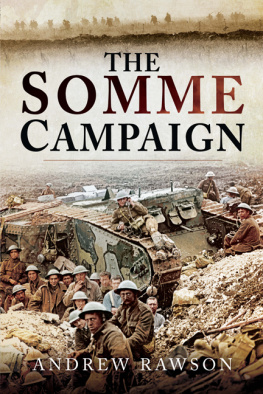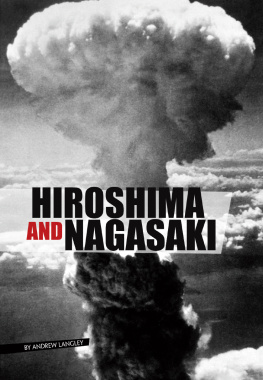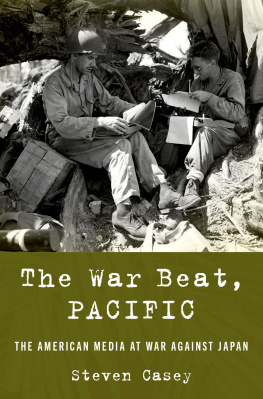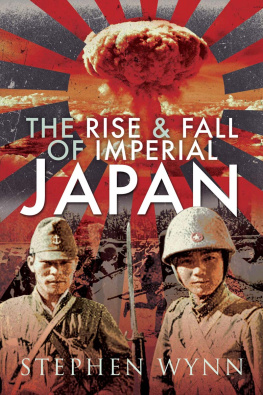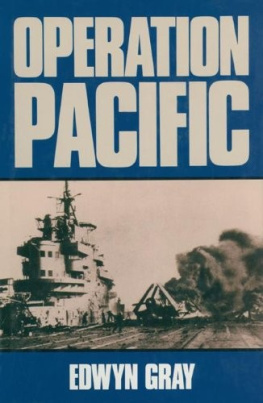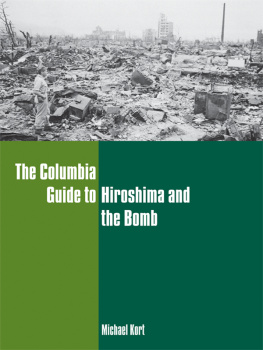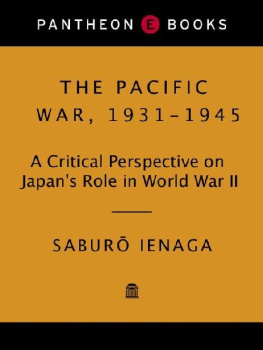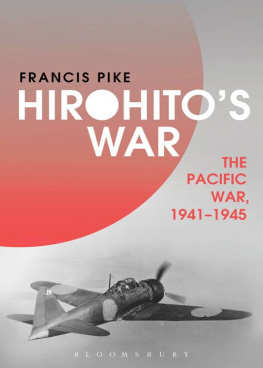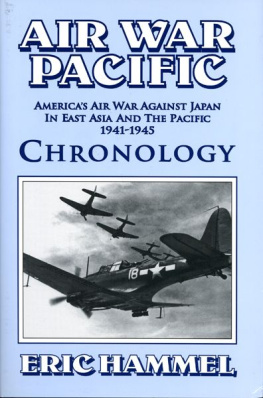
First published in Great Britain in 2005 by
P E N & S W O R D M I L I T A R Y
an imprint of
Pen & Sword Books Ltd,
47 Church Street, Barnsley,
South Yorkshire.
S70 2AS
Copyright Andrew Rawson, 2005
ISBN 1-84415-289-8
PRINT ISBN: 9781844152896
PDF ISBN: 9781783038596
EPUB ISBN: 9781783038619
PRC ISBN: 9781783038602
The right of Andrew Rawson to be identified as Author of this
Work has been asserted by him in accordance with the
Copyright, Designs and Patents Act 1988.
A CIP catalogue record for this book is available from the
British Library
All rights reserved. No part of this book may be reproduced or
transmitted in any form or by any means, electronic or mechanical
including photocopying, recording or by any information storage and
retrieval system, without permission from the Publisher in writing.
Designed and typeset (in 12pt Gill Sans Light)
by Sylvia Menzies, Pen & Sword Books Ltd
Printed and bound in Great Britain by CPI UK
Many of the photographs in this book have been reproduced
with kind permission of the United States National Archives.
Captions indicate the photograph reference number.
Pen & Sword Books Ltd incorporates the imprints of
Pen & Sword Aviation, Pen & Sword Maritime, Pen & Sword
Military, Pen & Sword Select, Pen & Sword Military Classics
Leo Cooper and Wharncliffe Local History
For a complete list of Pen & Sword titles please contact:
PEN & SWORD BOOKS LIMITED
47 Church Street, Barnsley, South Yorkshire, S70 2AS, England.
E-mail:
Website: www.pen-and-sword.co.uk
Introduction by the Author
After the surprise attacks on Pearl Harbour and the Philippines in December 1941 and the fall of Singapore the following spring, the Allies had been on the defensive in the Pacific and the Far East. Following naval victories and bloody battles as far apart as Tarawa in the Pacific and Kohima in India, the Allies were ready to strike back.
The tide turned in the autumn of 1944 as British and Indian troops made progress through the jungles of Burma while Chinese troops, with the help of American supplies and equipment, held the Japanese at bay.
The Americans struck back in the Philippines in December 1944, heralding the start of a six month campaign to clear the chain of islands, allowing General MacArthur to fulfil his promise to return. The capital, Manila on the main island of Luzon, was captured in March 1945 but resistance across the islands continued through the summer as the Japanese chose to fight in the jungles and mountains rather than surrender.
The US Marine Corps landed on Iwo Jima, an isolated volcanic island halfway between Saipan and Tokyo, in February 1945. After landing under withering fire, the Marines conquered Mount Suribachi, leaving one of the endearing images of the Second World War, the raising of the Stars and Stripes on the summit. Fierce fighting continued for over a month with horrendous casualties on both sides; over 45,000 men were killed or injured on the tiny island. Once the island had been cleared,Tokyo no longer had an early warning radar station against bombing raids, and the Americans had a new airbase to launch devastating air raids on the Japanese homeland.
Okinawa, the gateway to Japan, was next; the Americans needed the island as a staging area for the final attack on the Japanese mainland. The landing, codenamed Operation ICEBERG, at the beginning of April, was unopposed, but the Japanese were waiting inland hiding in hills they had spent months fortifying. Again, there was bitter fighting as the Americans resorted to blowtorch and corkscrew methods to blast or burn the Japanese out of their tunnels, but as American casualties soared to over 35,000, the Japanese leader realised he had been beaten, and committed ritual suicide, many of his men followed his example or fled into the hills.
In Burma, the British continued to put pressure on the Japanese, and, after crossing the Irrawaddy River in April 1945, raced south to the capital Rangoon, while Chinese troops went over to the offensive. With the tide turning against them on all sides, the Japanese were forced to withdraw into Thailand and await their fate.
The fighting across Burma and the Pacific was brutal, as the Japanese resorted to suicidal tactics and the Allies unleashed every type of weapon available to them. Planes, ships, artillery, tanks, flamethrowers failed to subdue the Japanese and the Americans had to eventually resort to a fearsome new weapon the atomic bomb. Two were dropped on Hiroshima and Nagasaki at the beginning of August, and within days, the Japanese were suing for peace. Over 250,000 civilians were killed, and thousands more suffered for years to come from radiation sickness, but Operation OLYMPIC, the projected invasion of Japan, would not have to be launched. The conclusion of the war in the Pacific had heralded the start of the nuclear age.
Chapter One
Burma and China
The Japanese attempt to take Imphal, the gateway to India, had stalled at Kohima in the spring monsoons of 1944. General William Slims Burma Corps, composed of British and Indian troops, held back General Mutaguchis divisions in fierce fighting and by July the Japanese had to fall back starving and low on ammunition.
British Fourteenth Army followed through the rain soaked jungle and crossed the Chindwin at the end of November but Vice-Admiral Lord Louis Mountbatten, the commanding officer of South East Asia, was forced to divert troops and supplies elsewhere, allowing the Japanese to withdraw across the Shwebo Plain and behind the Irrawaddy River under their new commander General Hyotaro Kimura.
With only four infantry divisions, two tank brigades and a minimum of air support under his command, Slim opted to make a feint crossing near Mandalay while IV Corps attacked at Nyaungu, 100 miles downstream. During the early hours of 14 February the Japanese were alerted as the leading wave sailed across the wide river and the British and Ghurkha troops suffered heavy losses. Tanks gave covering fire at first light and Indian troops crossed to secure a slender hold on the far bank. With a bridgehead secured, IV Corps could advance across the Burma Plain to Meiktila, the Japanese communications centre in Burma.
Fighting side-by-side, the British and Indian soldiers encountered fanatical, and at times suicidal, resistance but still entered the town on 6 March, forcing the majority of the garrison to retire while a rearguard held on, at the ancient Fort Dufferin until the 21st, and only surrendered after bombers had blasted holes in the fortifications. With the monsoon season about to begin, Slim ordered XXXIII Corps to focus the Japanese attention along the Irrawaddy River as IV Corps advanced on a narrow front down the Sittang River. It was a risky operation but the gamble paid off and by 23 April they had advanced over 300 miles, capturing Toungoo as Tokyo ordered a general withdrawal to the coast in response to American successes in the Pacific.
While IV Corps struck deep into the heart of Burma, XV Corps had progressed with Operation DRACULA, a series of amphibious landings along the west coast. An attack on the Arakan area in December 1944 had been followed by the capture of the port facilities at Akyab and the airfields on Ramree Island a month later. By the end of April Slim was ready to launch the final attack against Rangoon, and on 2 May, Indian paratroopers landed south of the city while 26th Indian Division came ashore on both sides of the Rangoon River. The city was deserted; the Japanese had withdrawn and the local population turned out in force to cheer the Indian troops as they moved into the heart of the city.
Next page
